Final Notes on the 2023/24 LA Phil Season
/By Truman C. Wang
5/13/2024
The LA Phil’s Saturday matinee concert on April 13 was an earthshaking affair, not only because of the Organ Symphony of Saint-Saëns, but also the lesser-known complete Mother Goose Suite by Ravel that garnered waves of applause. It was a concert that showcased the various sections of the orchestra and their principal players (similar to another popular Saint-Saëns work, Carnival of the Animals). The first to shine was concertmaster Martin Chalifour in Ravel’s Tzigane, full of French charm mixed in with Hungarian fire and virtuosity. The four fairytales in the Mother Goose Suite (Ma mère l'Oye) were memorably strung together with brilliant solo turns by the harp, flute and oboe, in a brilliantly colorful reading by French conductor Louis Langrée. During the curtain call, he picked up the music score and applauded it, merci beaucoup Monsieur Ravel. The eagerly awaited Organ Symphony in the second half of the concert did not disappoint. As many times as I have heard this work, the mighty power and scale of the organ part never fail to shock and awe. LA Phil’s keyboardist Joanne Pierce Martin played the organ (and the celesta in the Mother Goose Suite) and she was superb, breathing life into the 6,134 pipes of the Walt Disney Hall concert organ. I moved upstairs from my usual perch in the orchestra. The organ sounded lovely up there; the deep bass pedals in poco adagio flooded the hall like a warm blanket in a cold rainy day; the famous maestoso-allegro finale knocked the wind out of the listener with its sheer force and magnificence.
These days, a classical concert would not be complete without an obligatory work of new music. On this occasion, it’s a slow-moving, 13-minute musical cumulus cloud of rhythm, harmony and melody, titled Assemble, by African-American composer Jonathan Bailey Holland. The work’s hazy colors and somewhat impressionistic texture fit in nicely with the French theme of the program.
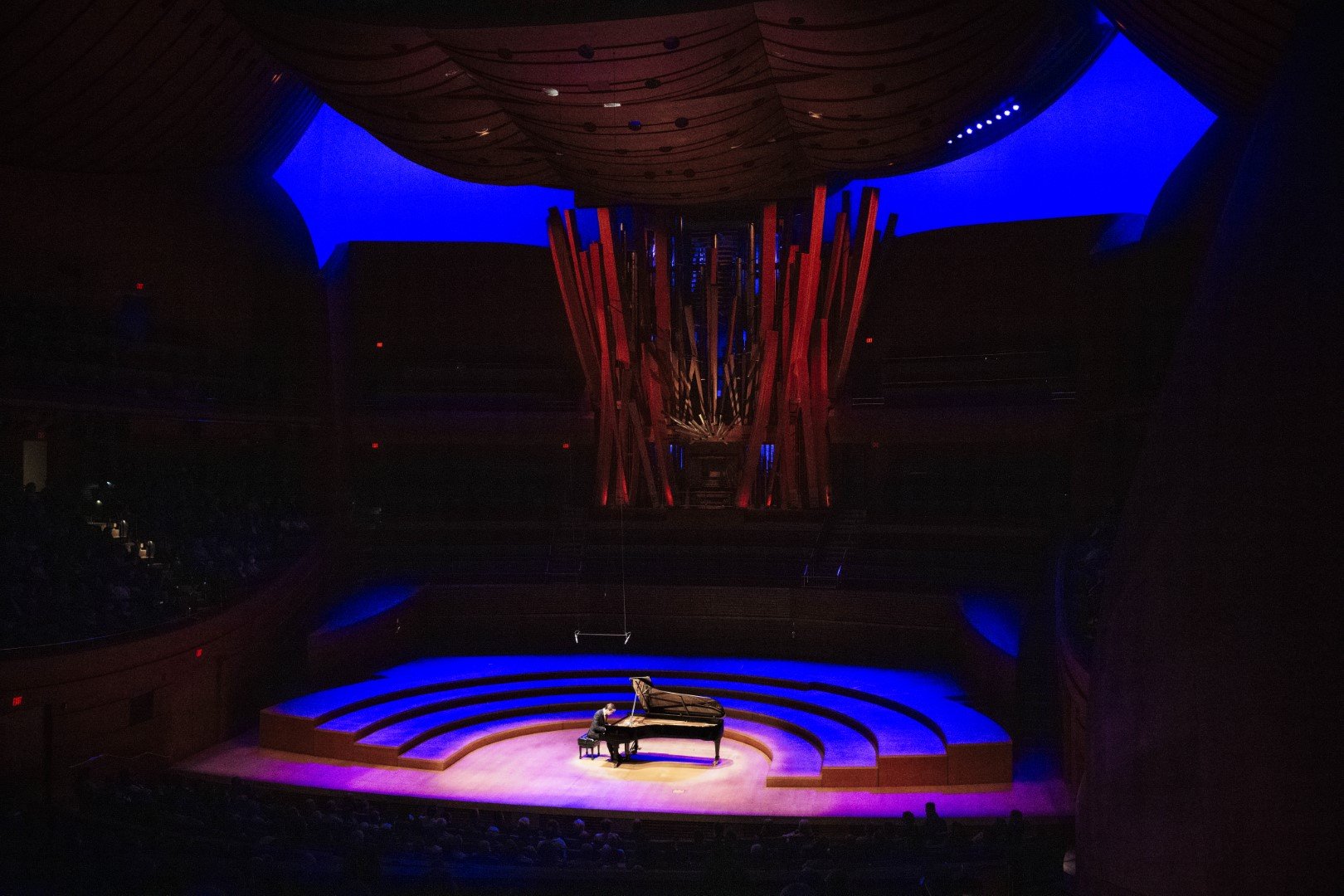
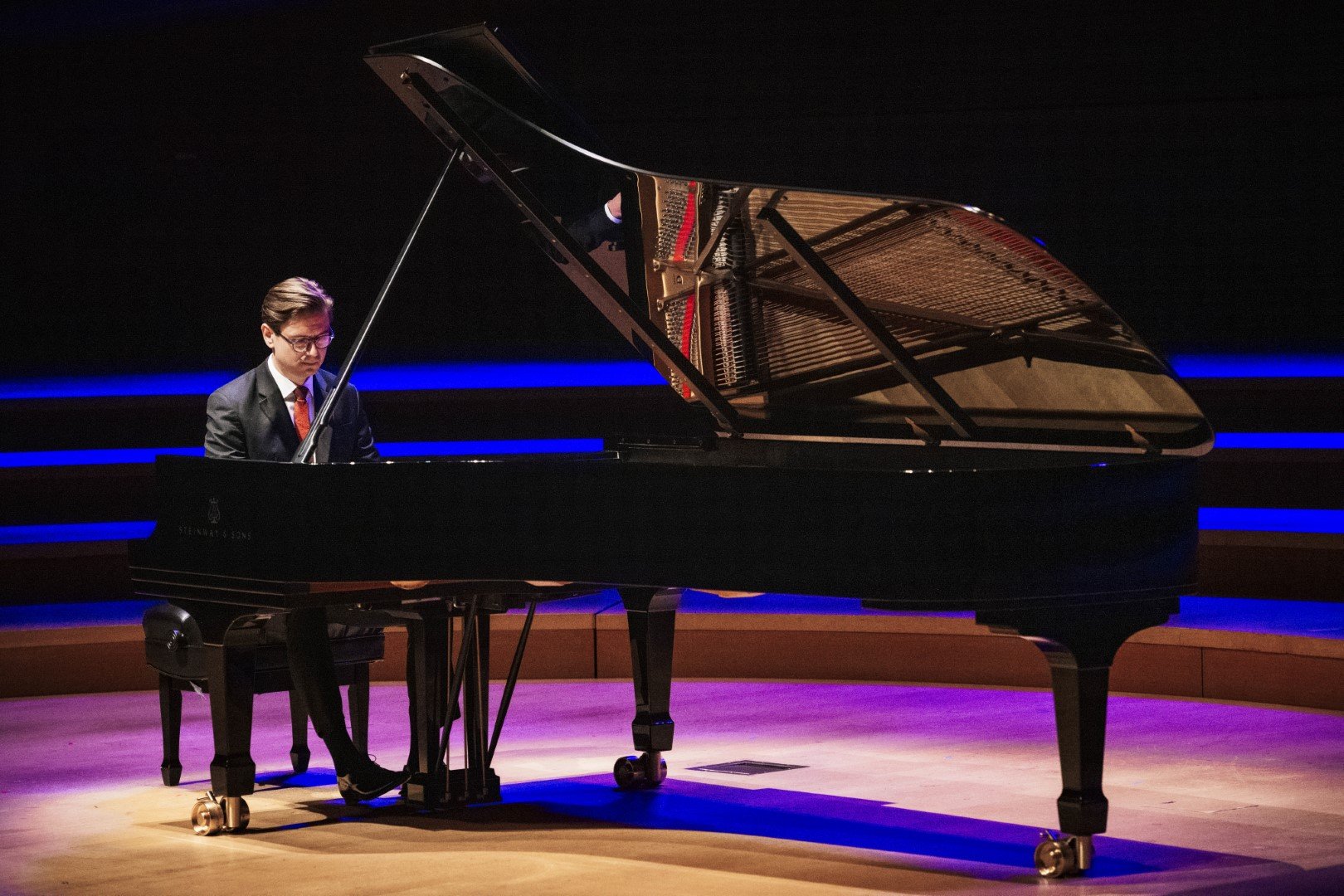
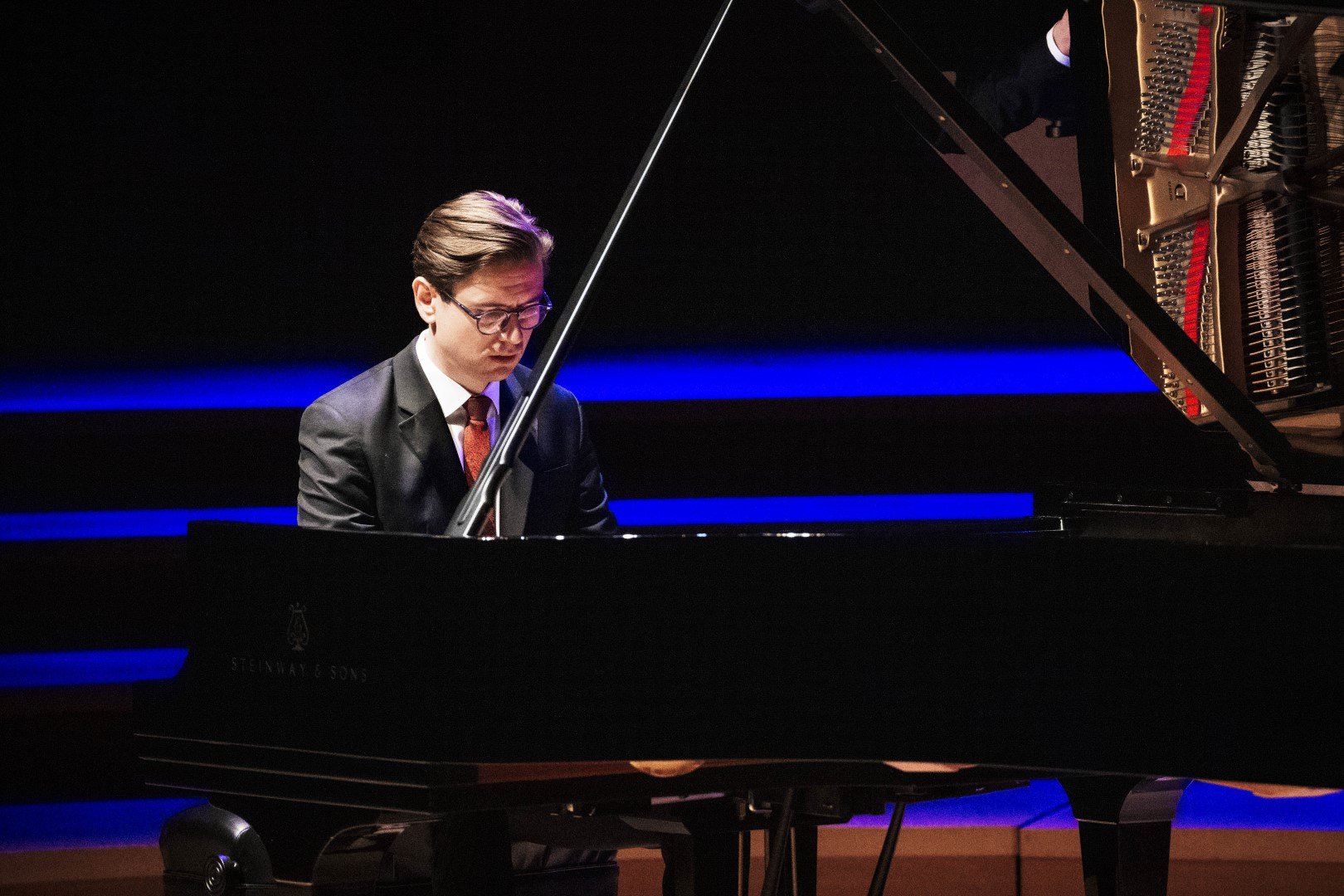
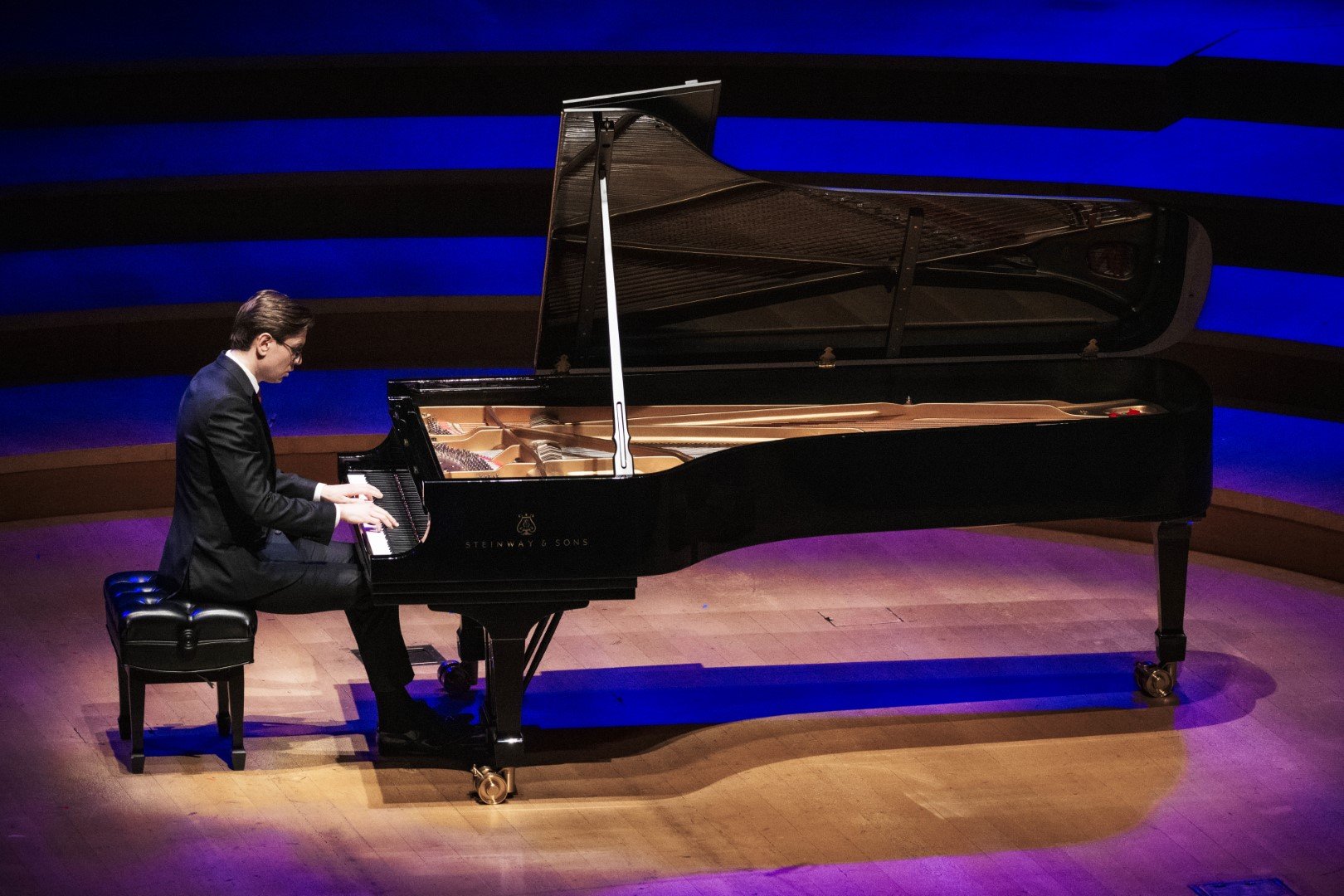
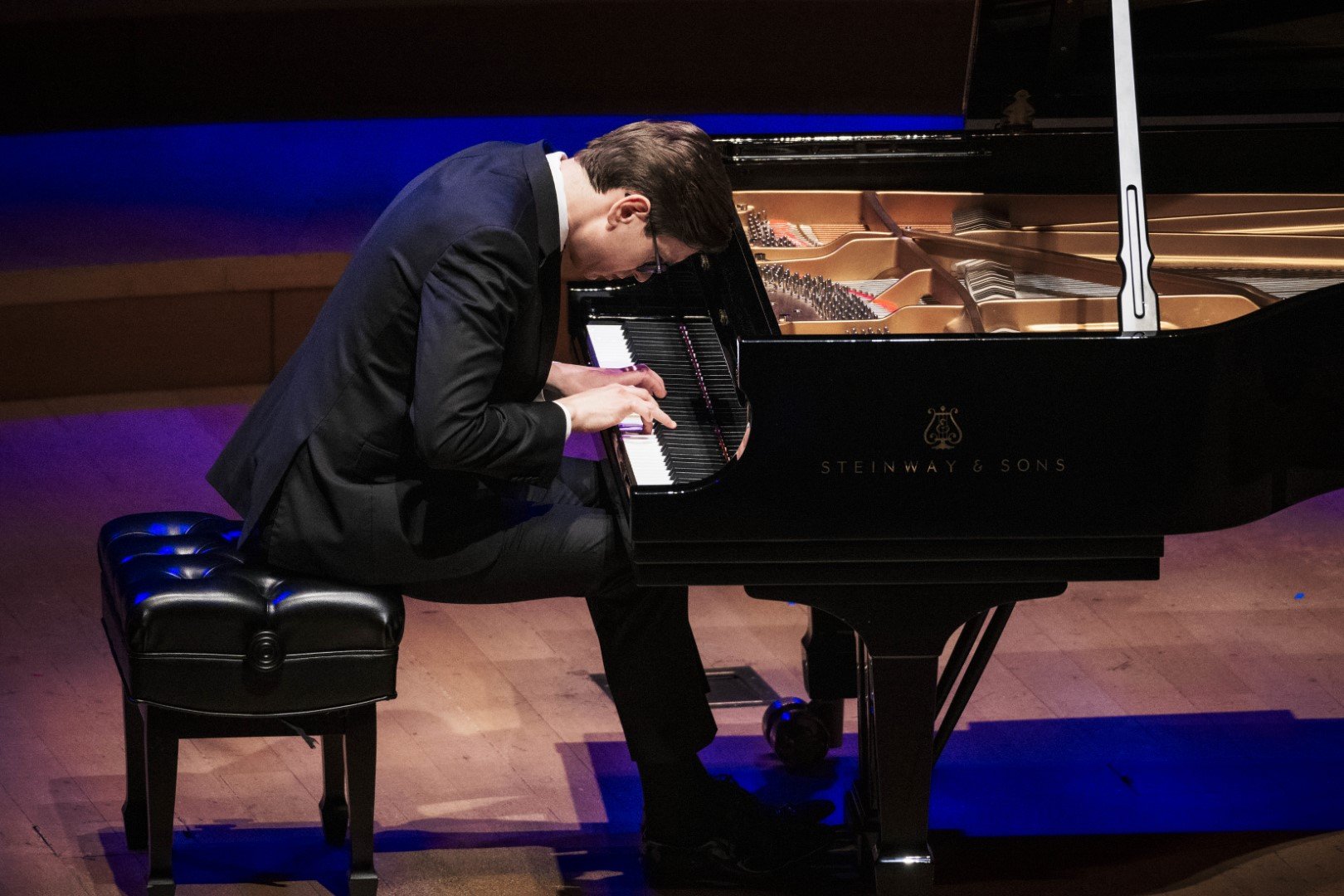
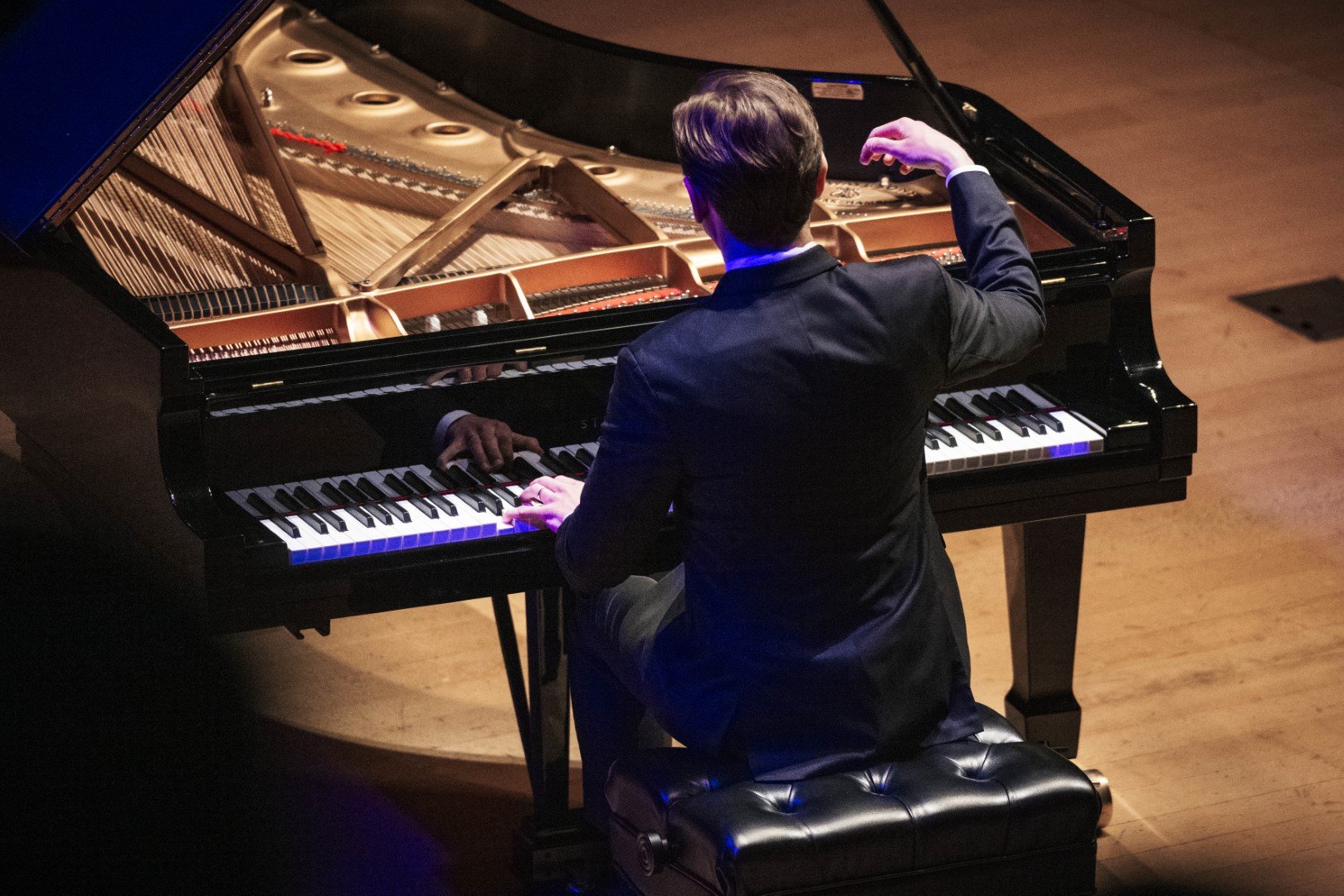
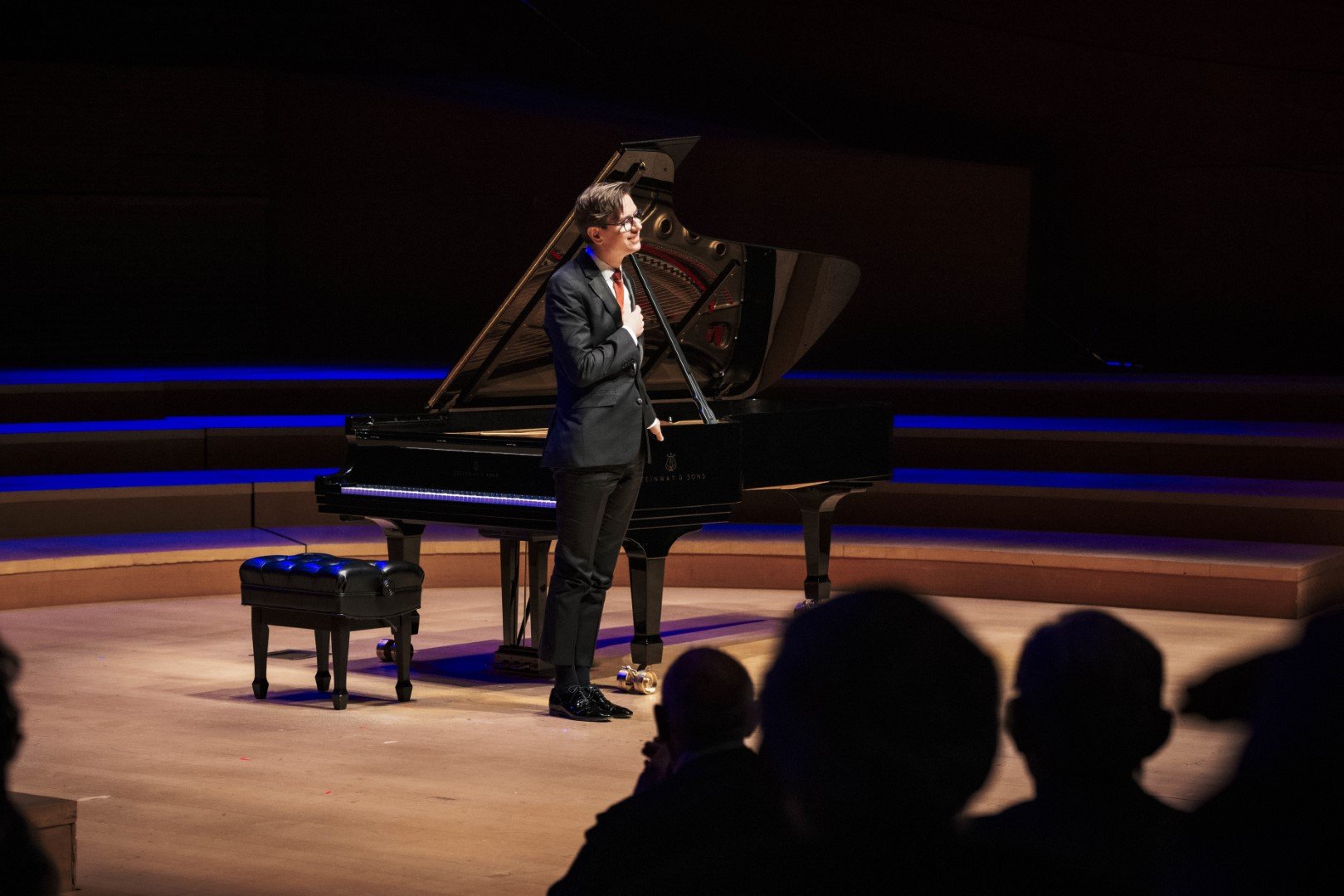
On May 1, the cerebral (and celebrated) Icelandic pianist Víkingur Ólafsson returned to Disney Hall to play the Goldberg Variations and to promote his new recording. By now we all know Ólafsson is an ultra-serious musician, unsmiling in his publicity shots, and unsmiling in his music-making, whether playing Mozart in this hall last year, or Bach last evening. No, his Goldberg would not be the first choice recommendation for a novice, but one of many good ‘alternate versions’, offering up a wayward but cogent view of the work on the modern piano. The Steinway chosen by Mr. Ólafsson for the recital was a beautiful instrument, with crisp, rounded tones at all speeds and dynamic levels. As the music started, one thing soon became clear: the pianist favored extreme contrast of tempi and dynamics, often at the expense of lyricism and architectural integrity; all the canons were played fast and furiously, fortissimo and prestissimo, crashing head-on into the next group of canons and toccatas. The visceral excitement was undeniable, but the trick eventually grew old in the second half (15th variation onward) when, in the 20th, 23rd, 26th and 27th variations, the double-manual harpsichord effects that sound convincing in Mr. Ólafsson’s recording studio became a hopeless puddle of sounds in the diffused acoustics of the Disney Hall. (Listen to the same tracks played by Angela Hewitt for the clarity of melodic line in a storm of fury and passion.) The slower pieces, in contrast, were dragged out to unseemly lengths – the ‘Dark Pearl’ 25th variation clocked in at a glacial 10 minutes (versus Perahia’s 7 minutes). It was a Goldberg of extremes, but to Mr. Ólafsson’s credit, he somehow, improbably, against all odds, made the abrupt transitions sound organic and satisfying (not self-indulgent and cringe-worthy like Lang Lang’s). When he arrived at the final destination of the aria da capo, there was a true sense of occasion that greeted the return of a wayward wanderer.
Saving the best till last, a pair of pianists in May memorably concluded the L.A. Phil season at the Disney Hall. On Thursday, May 2, the venerable Portugese pianist Maria João Pires, age 79, played Beethoven’s Fourth Concerto (in lieu of the originally announced Mozart E-flat Major Concerto). There was a sense of classical elegance in Ms. Pires’ solo playing and intimacy of dialogs between the orchestra and piano that was rarely heard in the concerts conducted by maestro Dudamel, who is not known for his sensibilities in the Classical works. From the prayer-like opening of the Concerto to Orpheus’ taming of the Furies of the second movement, and the brilliant cadenzas (reworked from Beethoven’s own by Ms. Pires), the listener had the pleasure of hearing Ms. Pires’ Steinway transformed into a singing instrument, pouring forth silken lines after silken lines of great beauty and poetry. Moving from the Orpheus legend to the Spanish legend of Don Quixote, Richard Strauss’ tone-poem program is highly detailed, bordering on kitschy at times (the bleating sheep, the flying hobby horses, etc.) The solo cello (Robert deMaine) and solo viola (Teng Li) both did an admirable job of portraying the Don and his sidekick Sancho Panza, respectively. Maestro Dudamel worked his magic to unleash myriads of interesting sound effects from Strauss’ youthful, colorful tone poem (which made him the most money before Salome.) Other players – notably the harp, oboe, horn, and the percussionists operating the two wind machines – also contributed memorably to this musical tale of La Mancha.
During the intermission, I caught sight of the L.A. Phil’s new CEO Kim Noltemy shaking hands with well-wishers. All eyes are on her to dream the impossible dream of finding Mr. Dudamel’s replacement and soon. In contrast to the city by the bay to the north, and other U.S. orchestras, the Los Angeles Philharmonic is in a healthy place fiscally and artistically. Ms. Noltemy has got herself a trophy job; don’t fix what ain’t broken.
Yuja Wang could not have been a more different pianist than Maria João Pires. She is young, brash, and known for her flashy encores and daring outfits (I saw many males in the audience, young and old, armed with binoculars and fogging up the lens). On Mother’s Day Sunday, May 12, 7:40pm, she strode out onto the Disney Hall stage wearing what can only be described as a little black sequined bathing suit with a plunging back, to wild cheers (and some catcalls) of her fans and to the dismay of many mothers in the audience. After taking some time to adjust the disagreeable piano bench, she sat down to play a religious piece about baby Jesus by Messiaen (Nos. 10 and 15 from Vingt Regards sur l’Enfant-Jésus). If all preachers looked like her, many atheists would be persuaded to go to church. The sparkly, glittering notes of the Messiaen nicely matched the shiny sequins on her body. The next piece, Debussy’s L’isle joyeuse, was an airy calm before the storm that was Scriabin’s Piano Sonata No. 8, which Ms. Wang pounded out with such animalistic ferocity as to be mistaken for Prokofiev’s 7th Sonata Pricipitato. A good thing she reversed the order of the Scriabin and Debussy, for after all that banging she might not have enough strings left in the piano to play the Debussy! Following the intermission, the intrepid pianist changed into a more classy pink bathing suit gown. (She loves the beach!) to play the four Ballades of Chopin. Ms. Wang again changed the order of the listed program and played the Ballades 2, 3, 1, 4 instead of 1, 2, 3, 4 (presumably to show off her stunning octaves and whirlwind scales in Nos. 1 and 4.) Her idiosyncratic phrasing and odd placement of rubato and accents were not my cup of tea. Ballades are songs for the piano; nowhere during these ballades did I hear any attempt at beautiful singing. Note for note, Ms. Wang played Chopin well, often brilliantly, missing only its belcanto soul. The encores saw Ms. Wang back in her element, as an orchestral pianist par excellence, hammering out, among other delectable bonbons, the Scherzo from Tchaikovsky’s Symphony No. 6
Truman C. Wang is Editor-in-Chief of Classical Voice, whose articles have appeared in the Pasadena Star-News, San Gabriel Valley Tribune, other Southern California publications, as well as the Hawaiian Chinese Daily. He studied Integrative Biology and Music at U.C. Berkeley.



